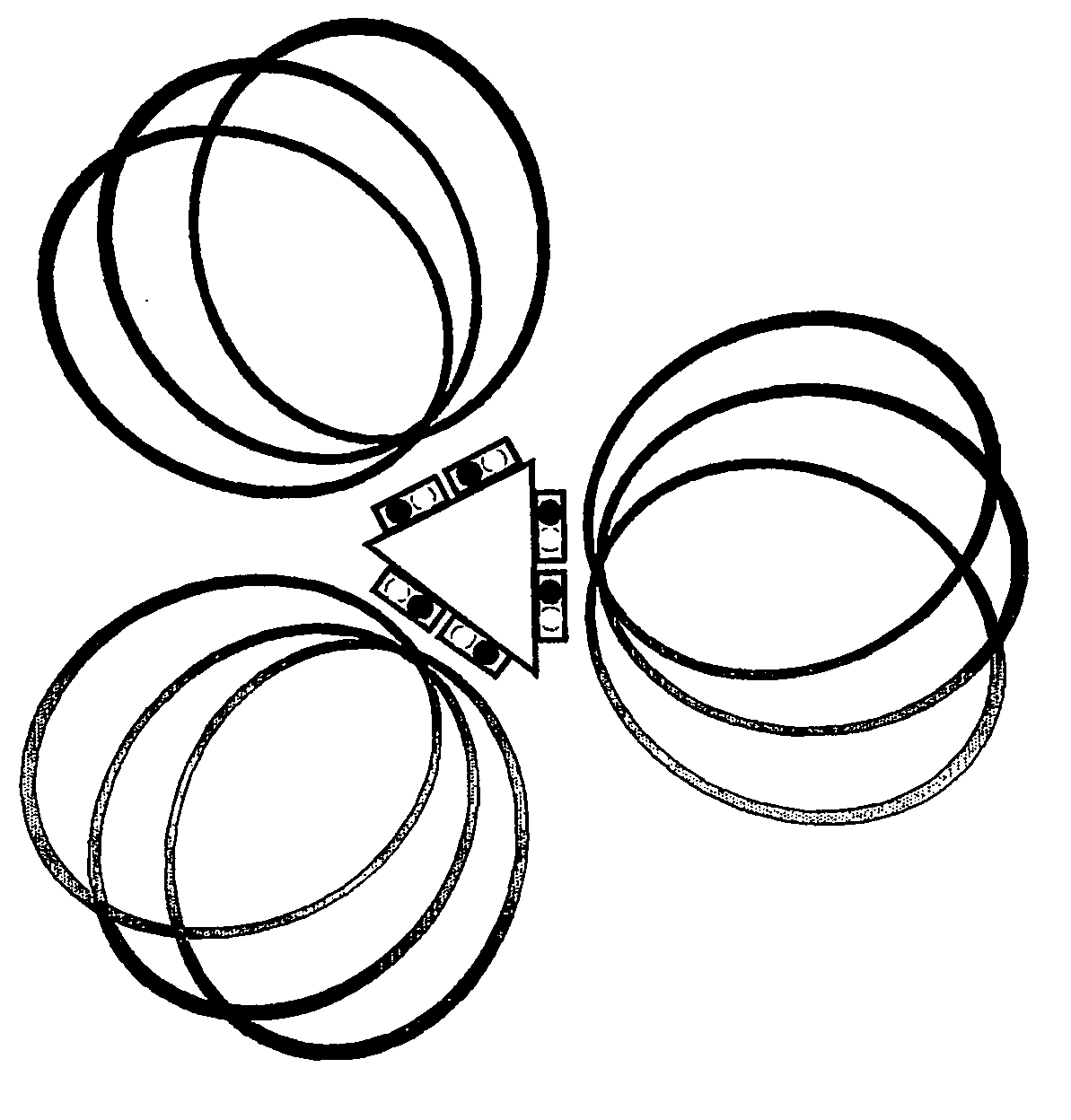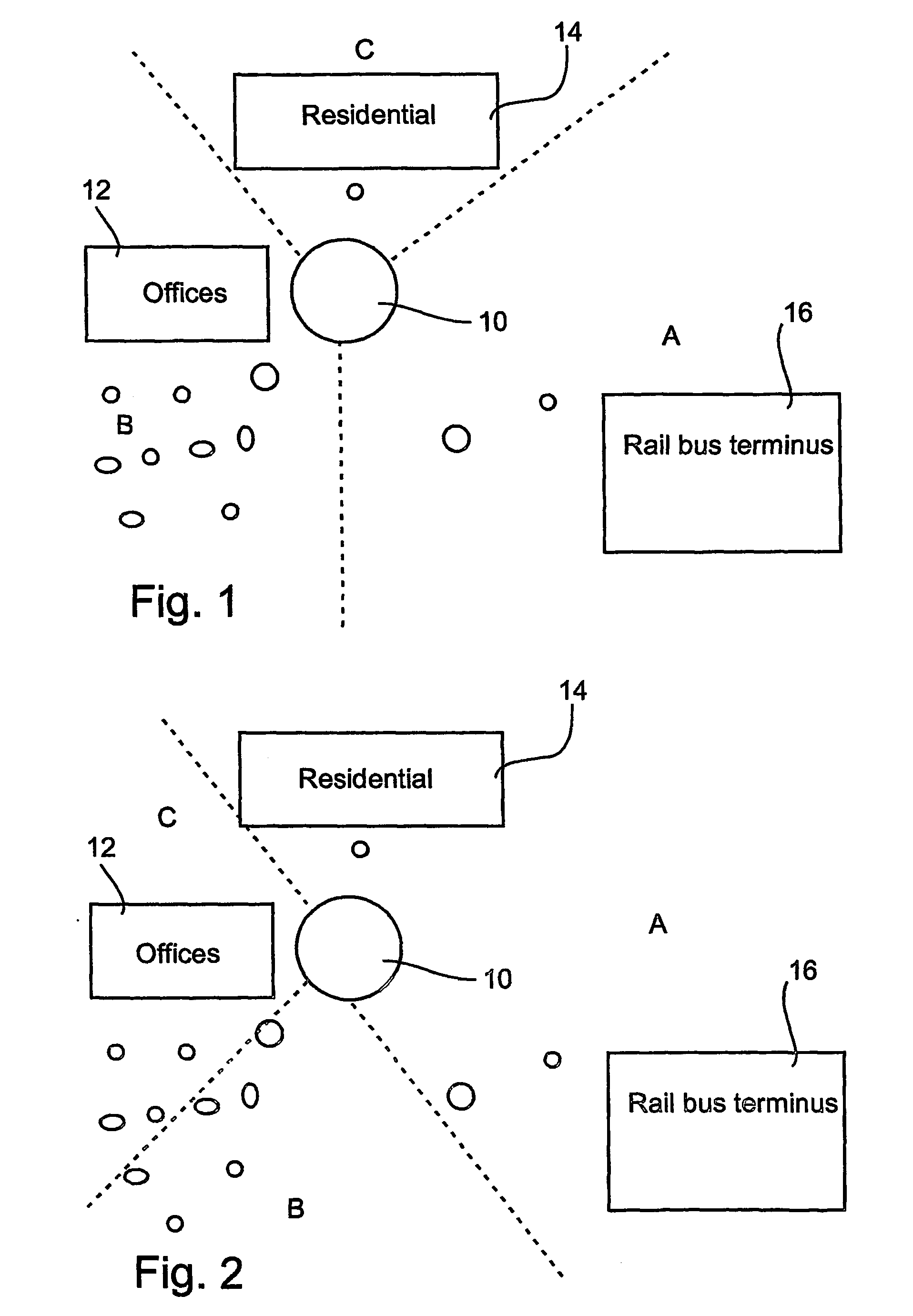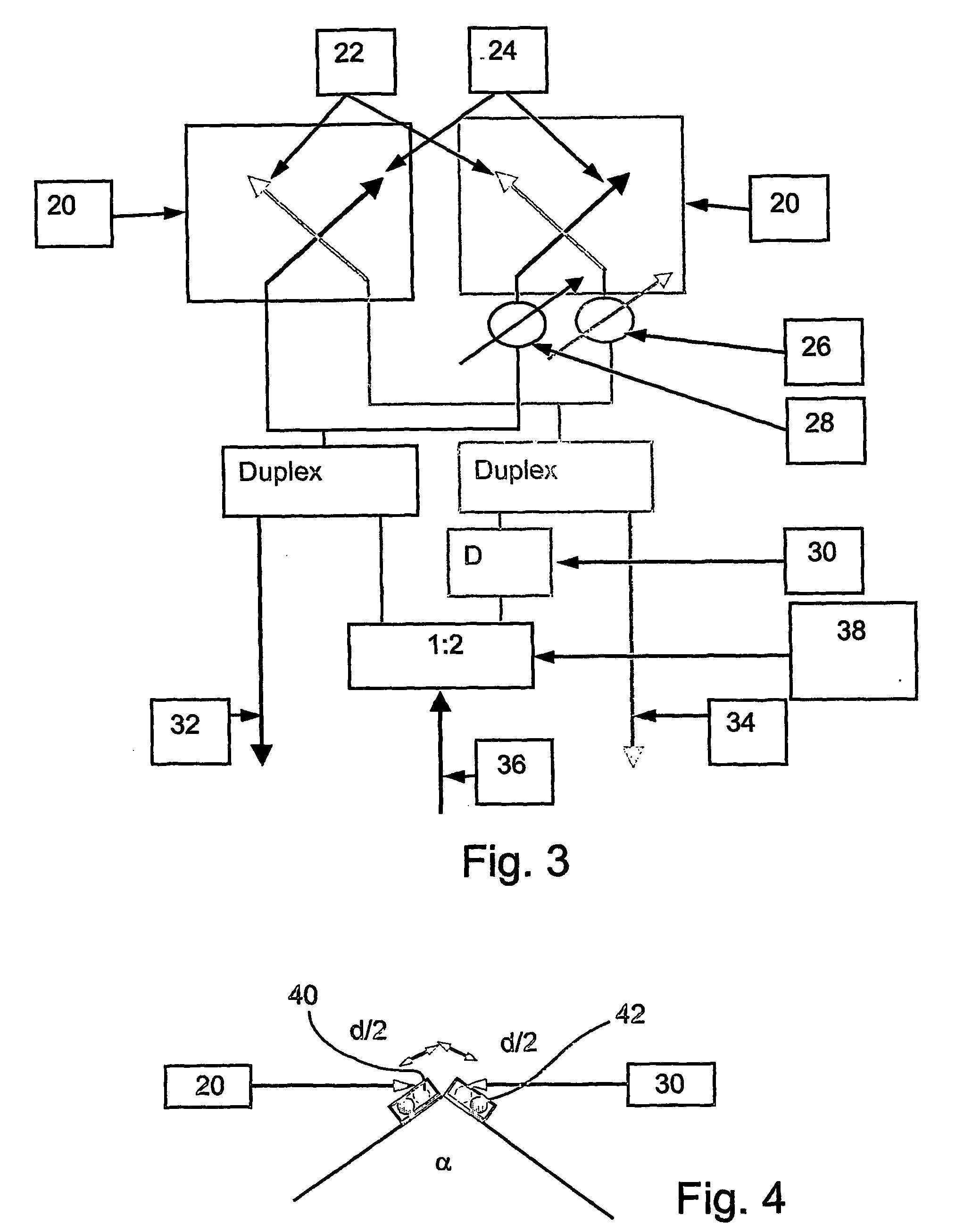System and method for load distribution between base station sectors
a load distribution and base station technology, applied in the field of system and method for load distribution between base station sectors, can solve the problems of cell-splitting being both cost-prohibitive and inhibiting the proliferation of new antennas, and the cellular communications system is subject to ever increasing user demands, so as to eliminate interference nulls
- Summary
- Abstract
- Description
- Claims
- Application Information
AI Technical Summary
Benefits of technology
Problems solved by technology
Method used
Image
Examples
Embodiment Construction
[0047] The present embodiments provide novel apparatus and methods to produce controllable coverage shaping in a cell that enables load balancing between sectors and between cells, and in certain embodiments also provides effective transmit and receive diversities to the base station in a simple and low cost manner. U.S. patent application Ser. No. 10 / 470,467 referred to above discloses a configuration utilizing space diversity, by two spaced antennas in each sector, each one is a two-column phased array. The present embodiments utilize polarization diversity, and combinations of polarization and space diversity, for the same purpose. A first preferred embodiment of the present invention provides a polarization-diversity cell or sector shaper using just one antenna structure per sector. The antennal structure features two columns, and each column is dual polarized (i.e. + / −45° linear polarization). The antennas have the same polarizations in the two columns and are thus phased as a ...
PUM
 Login to View More
Login to View More Abstract
Description
Claims
Application Information
 Login to View More
Login to View More - R&D
- Intellectual Property
- Life Sciences
- Materials
- Tech Scout
- Unparalleled Data Quality
- Higher Quality Content
- 60% Fewer Hallucinations
Browse by: Latest US Patents, China's latest patents, Technical Efficacy Thesaurus, Application Domain, Technology Topic, Popular Technical Reports.
© 2025 PatSnap. All rights reserved.Legal|Privacy policy|Modern Slavery Act Transparency Statement|Sitemap|About US| Contact US: help@patsnap.com



